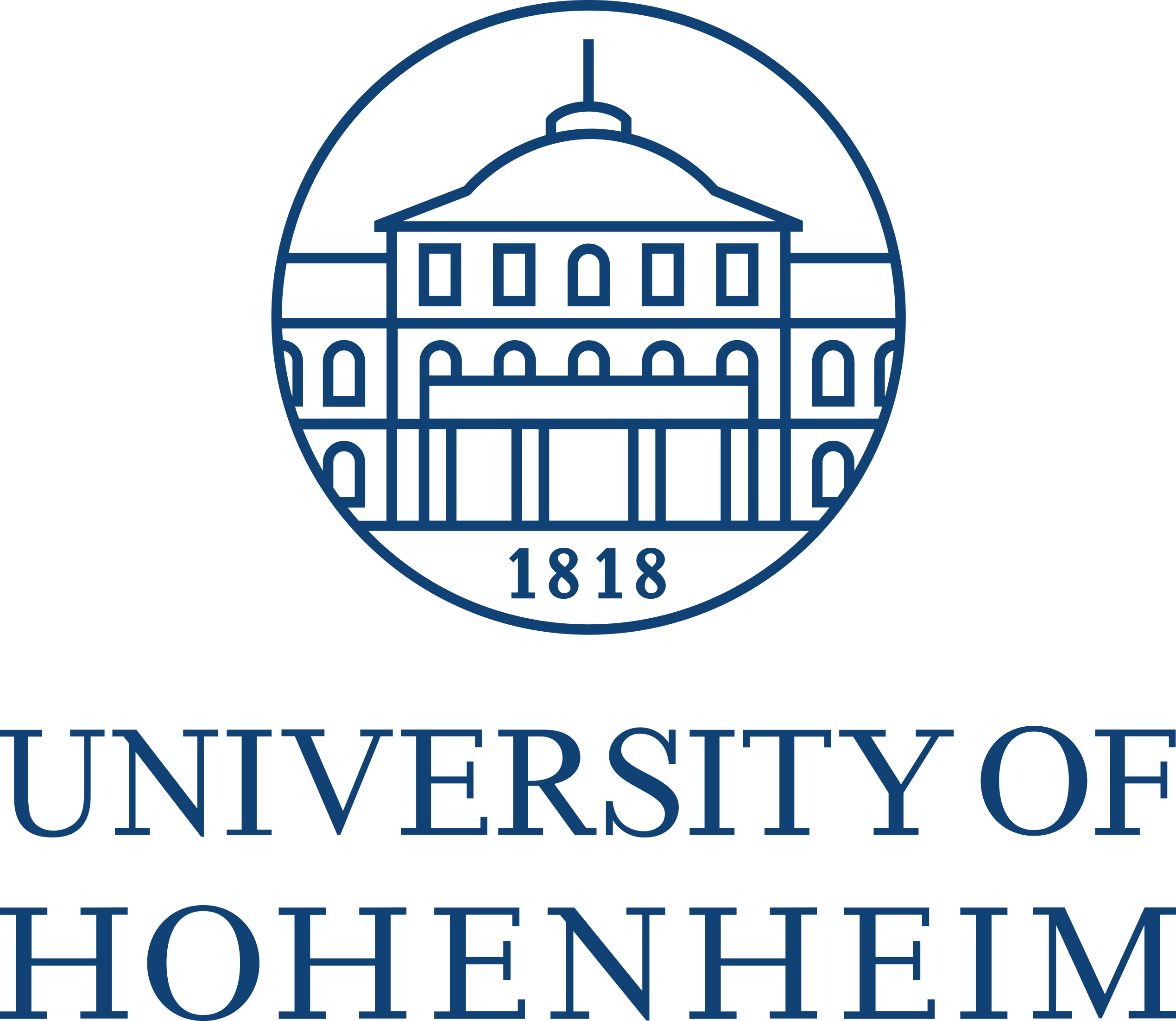What is science? - A short history of science philosophy
Motivation
Here is an improved version of your lecture notes:
In this chapter, we begin with a philosophical exploration of science and the scientific process.
Such an exploration is crucial for anyone actively engaged in scientific research to gain a comprehensive understanding of the history, core principles, and fundamental approaches of scientific inquiry.
Understanding the history of science and the philosophy of science provides valuable insights into the traditions shaping our work, the limitations within those traditions, and, importantly, a perspective on the future. This allows us to identify what may be missing in current scientific practices and how we can further develop and refine these practices.
This chapter provides a brief overview of the history of the philosophy of science and the development of the scientific method.
The philosophy of science is a specialized branch of philosophy, rooted in general philosophy. Philosophy itself forms the foundation of the scientific method and the various scientific disciplines that employ it (Figure 1).

When discussing the history of the philosophy of science, it is essential to understand that any philosophical or technical innovations should be viewed within the context of the period in which they emerged. Many insights from ancient philosophers may seem trivial to us today. In earlier times, knowledge about nature was primarily acquired through observation and reasoning rather than through experiments or technical tools. As a result, hypotheses from that period were often simplistic and, by today’s standards, may seem somewhat absurd or esoteric.
For example, it was widely believed that the universe consisted of four elements: earth, water, air, and fire. The complexity of matter was thought to result from various mixtures of these four fundamental elements. This worldview became prominent in pre-Hellenistic philosophy (600-400 BCE) and persisted in various forms until the end of the medieval period in Western natural philosophy. Additionally, similar elemental worldviews emerged in diverse cultures around the world.
A second important point is that many writings from ancient thinkers were either lost or never recorded, especially in non-European cultures. As a result, the knowledge, insights, and philosophical ideas of ancient philosophers are subject to survivorship bias, potentially giving us a skewed view of the depth and diversity of thought in classical Greece and neighboring regions.
The following sections will offer a simplified (and, for historians of science and philosophers, possibly reductive but hopefully accurate) overview of the history of science and the philosophy of science. We will focus on key concepts, individuals (mainly European men), and events that are most relevant to the overall theme of this course.
Learning goals
- Understand how the key components of the scientific method are grounded in the history of scientific practice and of the philosophy of science
- Have a basic understanding of the relationship between deductive and inductive inference
- Know the key concepts and terms of the history of science and the scientific method.
Classical period
The beginning of Western philosophy of science is commonly attributed to Aristotle. There were numerous philosophers who thought about natural phenomena, but Aristotle was the first to develop philosophical approaches for discovering truth, forming the foundation of the modern scientific method.
Aristotle
Aristotle was an eminent philosopher in ancient Greece. He was a student of Plato, who was himself a student of Socrates. Aristotle later became the teacher of Alexander the Great.

He founded a school of philosophy called the Lyceum. One of his major contributions to the philosophy of science is the invention of the correspondence theory of truth: A statement is true if it corresponds with reality; otherwise, it is false. The real question, however, is: How can we determine whether a particular statement is true or false? We will discuss the correspondence theory in greater detail in the context of the scientific method (See section on truth).
Aristotle further defined knowledge as justified true belief, obtained through a rational method of inquiry. Truth is the outcome of a sound method. Aristotle’s view was primarily deductive. Accordingly, he began with axioms.1 From these axioms, he derived truths. The model field of inquiry during the classical period was geometry, which held great importance for many people at that time. Observations were also essential for making inductive generalizations from data.
Aristotle’s scientific method was iterative, an inductive-deductive method:
- Inductions from observations to establish general principles.
- Deductions from these principles to test against further observations.
- Additional cycles to advance knowledge.
Thus, it was an iterative method, alternating between deduction and induction (Figure 2).
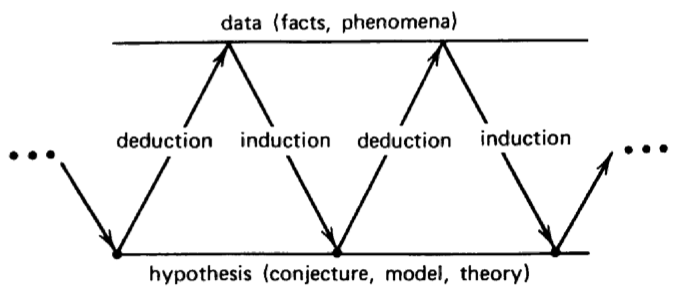
In classical times, science, which at that time was called ‘natural philosophy’ was grounded in Aristotle’s philosophy provided a good environment for science. Many other schools of philosophy in Athens were existing at that time. One criticism of the philosophy of science of Aristotle was the reliance on observation because our sense may deceive us.
The influence of the other schools waned and and waxed. Aristotle was rediscovered in the late medieval period when universities were founded. Subsequently, the development of the scientific method flourished as described below.
Aristotle also made important other contributions to science philosophy. He claimed that the physical world is real (in contrast to the philosophy of ideas by Plato). He also improved deductive logic.
There were two major problems with Aristotle’s philosophy. First, there was a confusion about the integration and relative influence of philosophical presuppositions, empirical evidence and deductive and inductive logic. Another fault of his: He had no interest in experimental manipulation of nature in the form of experiments. As a consequence, the development of experimental science was delayed by 1 1/2 thousand years. The reason for the disinterest in experiments was that it was considered unworthy of a philosopher to get his hands dirty with experiments.
Medieval scholars
The thirteenth century was crucial for the development of the modern scientific method as new ideas on how to conduct research emerged. These ideas were introduced by scholars working at newly established universities. The first university was founded in Bologna, Italy in 1088, followed by the university of Paris from c. 1150-11702 As a result, the scientific method we use today was developed between 1200 and 1600. The most important contribution of these philosophers was to reexamine the question of truth and to provide scientists with a practical, public method to reveal truths about the physical world. Different philosophers contributed various aspects to addressing this question, each with a different focus. One goal was to overcome the limitations of Aristotelian philosophy, which derived its certainty through deduction using ideas from logic and mathematics, rather than from principles rooted in physics. The scholars aimed to discover how a rational person could use their natural intellectual abilities to obtain true knowledge by exercising their innate reasoning skills.
The following highlights some of the key figures in the development of the scientific method.
Henry of Ghent (c. 1217 – 29 June 1293; Flemish (Flanders in Belgium)) was pessimistic about the ability to find truth in the natural world, as he held very high standards for what constitutes truth:
- Truth must be certain, excluding all deception and doubt.
- It must relate to a necessary object.
- It must be produced by a cause that is evident to the intellect.
- It must be applied to the object through syllogistic reasoning.
In his view, these high standards could not be met by natural science.
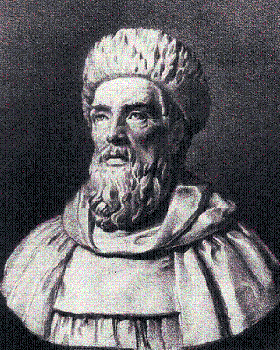
More optimistic scholars developed five significant new ideas:
- The development and use of experimental methods.
- Extensions of deductive and inductive logic.
- Criteria for selecting a theory.
- Competent handling of the presuppositions of science.
- A conception of scientific truth that is broader, more fitting, and more attainable than Aristotle’s stringent scientia.
Here’s the improved text in the requested format:
Development of experimental methods
The central figure in the development of empirical methods was Robert Grosseteste (c.1168-70 to 8 or 9 October 1253; English). He advocated moving away from presuppositions and current authorities toward:
- Empirical evidence
- Controlled experiments
- Mathematical descriptions
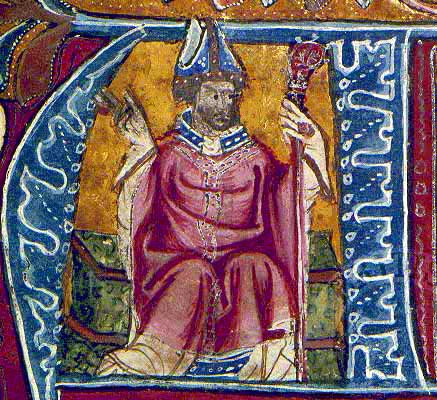
Furthermore, according to Grosseteste, methods precede results, and philosophy of science precedes science. In other words, thinking critically about science is required before engaging in scientific work.3
Roger Bacon (c.1219/20 to c.1292; English) later brought these ideas to Paris, which influenced scientists through the 17th century. What does this new experimental science entail?
- Conclusions reached by induction should undergo further experimental testing.
- Experimental facts have priority over presuppositions or reasoning and can expand the factual basis of science.
- Scientific research should extend to entirely new problems, which may also hold practical value. For example, Bacon studied optics.
Extended inductive and deductive logic
Stronger logic, combined with data from experiments on both manipulated and unmanipulated objects, allowed new rigor and strength in theory selection.
Methods for theory choice
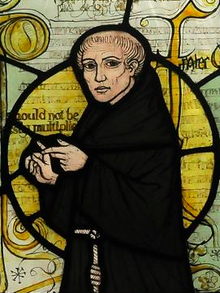
Theories must fit data and observations, but additional criteria also became essential. The principle of parsimony, introduced by William of Ockham (c. 1287 – 10 April 1347; English), is one such criterion. Often called “Ockham’s razor,” this principle states: if given a choice between two theories that equally explain the data, choose the one that requires fewer assumptions. This principle has guided scientific inferences and has been formally incorporated into scientific methods.
For instance, Gregor Mendel studied the inheritance of seven traits in peas by crossbreeding plants with different trait expressions (e.g., yellow versus green pea color). After two generations, Mendel observed that phenotypic traits in the offspring consistently displayed a ratio close to 3:1. Based on thousands of observations, he inferred a simple mechanism underlying inheritance, which he termed the “law of equal segregation,” referring to the consistent distribution of parental alleles across generations.
Another application of the principle of parsimony is in phylogenetics. One method to construct phylogenetic trees from DNA or protein sequences evaluates numerous possible trees for a group of species, then selects the tree requiring the fewest (“most parsimonious”) mutations.4
Here’s the improved version of your lecture notes with formatting intact:
Seeing is believing?
Albertus Magnus (c.1200 - 15 November 1280; German) worked on the fundamental assumption of science: “Seeing is believing.” He realized that the connection between perception and truth was not self-evident. This assumption could be questioned by philosophical and theological concerns. It was possible, he speculated, that impressions in the brain might come directly from God, without any physical impression or process.
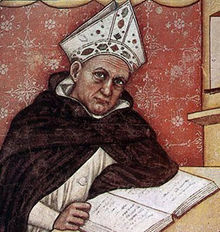
The central contribution of Albertus Magnus was to show that science cannot operate without presuppositions. This reflection on presuppositions is also known as suppositional reasoning. Albertus Magnus argued that God created both humans and the world. Therefore, humans are equipped to understand the world around them, making the world open to scientific investigation. This view had a profound influence on scientific development in universities within Western Christianity. Scientists would agree that with the common-sense presupposition, the world is intelligible. Suppositional reasoning (i.e., reflection on presuppositions) became the tool to think about natural philosophy (i.e., science) or theology. To navigate these restrictions, Albertus Magnus argued that God works through natural causes. It is the duty of the natural philosopher to pursue these causes to their limits.

Thomas Aquinas (c.1225 - 7 March 1274; Italian), a student of Albertus Magnus, contributed further. Aristotelian philosophy was regarded as complementary to theology, as both highly valued intellectual reasoning. However, each had distinct domains in which they could be trusted. Thomas Aquinas strengthened the position of natural philosophy. His argument was that there is no true conflict between philosophy and theology because both are gifts from God. Any conflict is apparent rather than real, arising from poor philosophy or poor theology. The remedy, he suggested, is to reconsider both philosophical and theological arguments.
John Duns Scotus placed great importance on empirical evidence. For him, it served as a balanced criterion against both the ‘illuminationism’ of Augustinian thought and extreme skepticism. Accordingly, certainty could be attained in three cases:
- Self-evident principles, such as the laws of identity and contradiction.
- Sensory experience: Although he acknowledged that sensory perception could not be deceived, he noted that judgments about sensed things might still be false, as with the illusion of a stick appearing bent in water.
In conclusion, because he trusted the senses, he believed that objective knowledge is possible and that the human mind has the power to produce infallible knowledge about things.
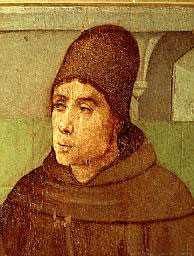
A summary of medieval philosophy of science
The medieval philosophers of science developed a conception of scientific truth that is broader and more comprehensive than the narrow view of scientia by Aristotle. For example, Ockham differentiated between two different types of sciences. The first is a scientia realis, which is the science of the real entities that whose investigation is based on experience. The second is a scientia rationalis, which describes concepts and is based on logical principles. Furthmore, the scientia of Aristoteles scientia was mostly qualitative, whereas Grosseteste and others developed and used quantitative and scientific methods for scientific inquiry. Furthermore, the adoption of arabic numerals by the universities in 1250 led to the extension of calculations. It was also realized, for example by Roger Bacon that science was not only of philosophical interest but led to practical benefits.
The most important step in medieval philosophy of science, however, was the use of experiments with manipulated objects to test hypotheses. By this, science became separated from theology and philosophy and subsequently achieved intellectual and institutional independence.
To conclude, the 13th century was important for the development of the scientific method. It started with a method lacking experiments and an approach; it ended with an essentially complete scientific method, because of the contributions of Robert Grosseteste in Oxford, Albertus Magnus at Paris and other medieval scholars.
Modern scholars
The evolution of empirical science
The modern age began with the discovery of America in 1492 and is characterized by additional important developments in science. An important trend was the development of powerful scientific instruments. Examples of such instruments include:
- The observatory by Tyho Brahe (1546 - 1601)
- The telescope and thermometer by Galileo Galilei (1546 - 1642)
- The barometer and a calculating machine by Blaise Pascal (1623 - 1662)
In addition, there was a rapid development of mathematics such as
- Probability theory and elementary statistics by Blaise Pascal, Pierre de Fermat, Jacob Bernoulli and Thomas Bayes
- Calculus was invented by Isaac Newton and Gottfried Wilhelm Leibniz
- Non-euclidean geometry was developed by Thomas Reid. He showed that Euclid’s classical axioms are not self-evident.
These developments led to various applications of science in solving practical problems. Hence, the philosopher Francis Bacon, who is often considered as the father of the experimental science because of his strong emphasis of empirical science, stated that “knowledge is power”.
The physicist Isaac Newton provided the following contributions:
- He extended his inquiries into unobservable objects and entities. E. g. he asked which particles determine the hardness of observable objects?
- He trusted induction.
- Knowledge exists even in the absence of a deep explanation. An example is his law of universal gravitation: \[F=G\frac{m_1m_2}{r^2}\]
We know the nature of gravity but not the cause.
The resurgence of scepticism
The translation of an ancient work of Sextus led to a rediscovery of Greek Skepticism, which stated that objective knowledge is not possible. Philosophers like Descartes, John Locke David Hume and Kant had to struggle again with skepticism as philosophers had in classical times. The main thesis of Sextus was that neither reason more sense perception guarantee scientific truths. Philosophers responded differently to this:
René Descartes stood for rationalism, expressed in his famous statement: “Cogito ergo sum”. This approach was to begin with general philosophical principles and then to deduce details of expected data. For this, a set of undoubtedly general principles were necessary. Descartes used doubt as a general principle and rejected the unverified assumptions of the ancient philosophers. Descartes started with “Cogito, ergo sum”, establish the existence of a god. His god was a good god and therefore allowed humans to perceive the world without deception.
Francis Bacon came from the opposite direction. He was an empiricist and started by collecting data and from them he derived general principles.
George Berkeley (1685 - 1753) was both an empiricist and an idealist. As an empiricist he sought to relate the content of our mind and our beliefs with the sensory experiences and the observation in nature. Experience is the benchmark of truth and meaning, and we have no other means to understand it. As an idealist, he thought that only minds and ideas but not the physical world existed. He was concerned abut skepticism too, however and stated this concerns. He thought that the differentiation between our perception of material things and the things themselves invites skepticism. In response he claimed that ideas are things. To quote from Gauch:
Those immediate objects of perception, which according to some; are only appearances of things, I take to be the real things themselves.
Berkeley brought the empiricist position to a new extreme. Only minds, their ideas and experiences constitute all of reality. How then, does he counter skepticism? He claims that by relying on ideas, a distinction between a reality a their recognition is not made (no dualism) hence no reason for skepticism. In essence he rejected the physical worked and our common sense experiencing it.
David Hume (1711 - 1776; Scottish) was one of the most important philosophers of science, and he was the philosophical inspiration of the important school of logical positivists in the 20th century. Hume insisted that the central point was human understanding. First, he was concerned with our mental abilities and limitations. Second, he rigorously adopted an empiricist theory of meaning. Accordingly, statements about reality had to be grounded in experience, which he understood as sense perceptions and ideas based on them. As an empiricist, he was not so much concerned with the physical objects themselves but the way we perceive them.
To him, the statement “I see a tree” was philosophically incorrect. Because the perception (“I see”) was mixed with an object (“the tree”). His correct statement would be “I am being appeared to treely”, which avoids the double existence of perceptions and objects and instead confines itself to the single existence of perceptions.
From this, Hume derived three conclusions:
- Cause and effect were meaningless concepts
- Inductive logic was bankrupt
- All scientific explanations were but obscure and uncertain speculations.
- Science can not establish a reliable link between internal mental beliefs and the external physical world
Was Hume a radical sceptic? This question is best studied by comparing Hume to Newton, one of Hume’s scientific heroes. Hume’s scientist was a post-sceptical philosopher, whereas Newtons scientists were common-sense scientists. Hume’s perceptions were strictly mental perceptions whereas Newton’s observations were sensory responses corresponding reliably to external physical objects. Newton says ‘I see a tree’. However, Hume with his scepticism, Hume had a strong influence on philosophical aspects of induction as shown later.
Thomas Reid (1710 - 1796) based his philosophy on common sense, quite in contrast to Hume. He tried to avoid to make natural science like geometry, and appealed to the common sense of partial sceptics (but not complete sceptics).
The 20th century
In more modern times, the most influential school of thought were the logical empiricists (also known as logical positivists) which existed in Vienna around the 1920 and lasted until the late 1960’s. Their members were philosophers, mathematicians and physicians such as Rudolf Carnap, Albert Einstein, C. G. Hempel and Kurt Gödel. Karl Popper was a strong critic of the circle.
Their school was a synthesis of earlier rationalist and empiricist traditions. The central idea of logical empiricists was to limit the scientific statements that made sense to sensory-experience reports and logical inferences based on those reports. This school combined empiricism, i.e., the idea that evidence derived from observation is required for true knowledge, with rationalism, i.e., the incorporation of mathematical and logical-linguistic constructs together with deductions of epistemiology (a philosophical branch that deals with the nature and the scope of knowledge). Accordingly, talking about unobservables (e.g., microscopic structures) can only be metaphorical or even impossible.
Logical empiricists wanted to create a purified version of science that is only grounded on solid data and avoids philosophical speculation.
But there were also serious problems:
- Science parted ways with philosophy and common sense. Even simple statements contain a metaphysical component.
- Theories can not be tested individually by means of their observational consequences, because theories always function together with auxiliary theories. E.g. theories about planetary motions implicate additional theories about space and time. Often observations (especially non-trivial ones) are theory-laden that may interfere with the expectation of empiricists that observations help to decide between theories.
- The scientist’s humanity was excluded because logical empiricism had a rather mechanic (and highly complicated) way of incorporating science with data.
These criticisms led to the next generation of science philosophers with the following statements:
- Empirical data can neither falsify nor confirm a theory. Therefore, truth is elusive.
- Theory choices are underdetermined by data. Briefly, an infinite number of theories is consistent with data. Observations are not free of a priori theories, and there are no clear criteria for choosing among theories.
- Paradigms can not be compared directly.
- Scientific statements by scientists make them ‘scientific’ but it is not clear why a scientific belief is in any way special compared to other beliefs.
Summary
The philosophical foundation of the scientific method we use today for scientific investigations developed over nearly 2,000 years.
Initial phase: It began with Aristotle’s reflections on how to make and interpret observations.
Medieval period: The second significant phase occurred during the medieval era when European universities were founded. Key components of the modern scientific method, such as empirical investigations and experiments, were established as essential.
Renaissance: The next phase began during the Renaissance, marked by major advancements in both mathematical and experimental methods and the development of new technologies. This progress helped establish the structure of modern science that we still follow today.
Ongoing discussions: Throughout this period, there was continuous debate about the role and effectiveness of inductive and deductive reasoning in making statements about nature. Other important topics included the roles of language, common sense, and our senses in learning about the natural world.
Key concepts
Further reading
- The structure of this chapter is based on the chapter “A short history of truth” PDF in the book by Gauch, which is recommended for further reading.
- The Wikipedia entries linked in this chapter.
Study questions
- The law of gravity by Newton describes gravity (actually the consequences of gravity) without a deeper understanding of why gravity exists. Identify similar rules, principles and laws from crop science that are sufficiently correct for a certain level of understanding and application, but where a deeper understanding of the underlying causes and mechanisms are missing.
In class exercises
Discussion questions, Okasha Chapter 1
- What are the key events and developments in the history of science according to Okasha?
- Which of these events result from technical breakthroughs and which mainly from new philosophical concepts?
- Which of these events may have been relevant for the development of agricultural and crop science?
- What is philosophy of science and its role according to Okasha?
- What is Popper’s definition of science vs. pseudoscience, and what is the key problem with his definition?
References
Footnotes
An axiom is a premise that serves as a starting point for reasoning and does not require justification because it is self-evident.↩︎
See Wikipedia entry on the history of European universities: Link ↩︎
For a critical review of Grosseteste’s contribution to the scientific method, see http://plato.stanford.edu/entries/grosseteste/#SciMet↩︎
